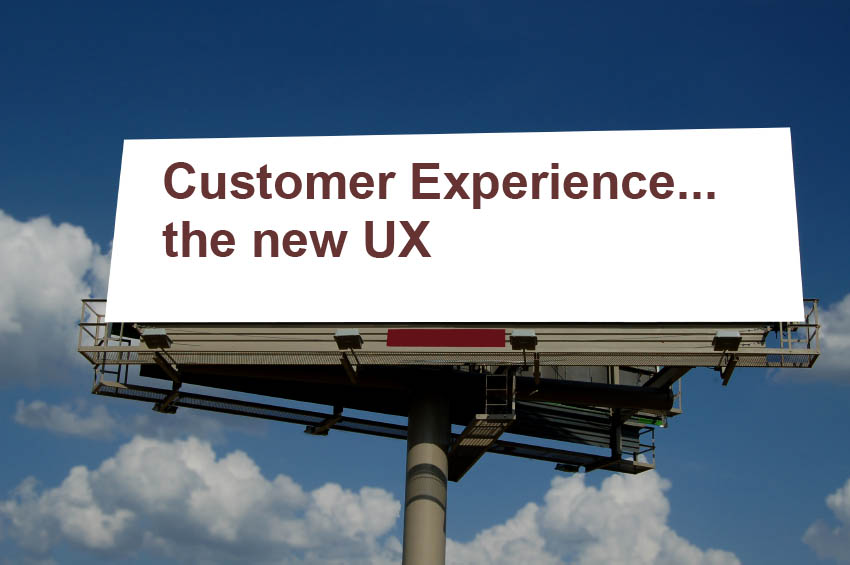First published in February 2014

Customer Experience (CX) in business, particularly in utility, telecos, energy, banking etc is not a new concept. Since Business Process Management (BPM) began to map customer experiences across functions and multiple customer touch points, businesses have realised that customers engage in multiple ways. By doing this they also realised that these multiple touch points need to be consistent and seamless, that is to say one channel should provide just as good an experience as another and allow customers to start and end an interaction through any channel.
This extends the thinking of User Experience (UX) from digital design into physical spaces to what has been called service design or now customer experience (CX). Semantics really, what is important is that users/customers expect to interact with us in any place and at any time, or what is referred to as an always on environment.
In the past User Experience evolved as digital sort to optimise user interfaces and architects sort to connect users in better ways, to improve computer machinery interactions. The approach to UX or what was then Usability, in the 90’s, focused on the interaction model, interfaces that were not necessarily intuitive but intuitive to learn. The next evolution was to engage users in the design to develop a User Centred Design process.
As smart phones became prelevant Users began to interact on digital devices in physical spaces. Also the interactions were not necessarily limited to the device but more often linked to the physical space. The rapid growth of Social in the the later part of the zeros helped drive this. Consumer and retail spaces saw customers search for product information, on their phones, while physically touching the product. In this case consumers knew as much if not more than the sales staff. More importantly consumers could physically research the product, try it and then purchase it at the best possible price from an alternate vendor.
These sorts of examples threatened the old bricks and morter model. The development of brands, such as Apple, highlights that one space does not make the other irrelevant. We only need to look at history to know that one channel does not necessity supercede the other, for example still photography did not destroy the medium of paint. In the case of Apple they ensure that shopping in store is the same as shopping online, unifying the experience.
The final and most important point of CX is that interactions with our customers is not limited to a channel or a single process. In stead it is may begin within any channel and move across channel and device. For example a user may start online, waiting for a bus to research a credit card and complete an application at home. To pick up the card they may go Instore whilst linking their PIN. The number of touch points is not an issue, the challenge is to ensure consumers are able to connect seamlessly at any point of time they need too, regardless of location or device.
UX to CX
The aim of CX is to pull together channels (contact centre, online, Instore, direct etc) into a seamless and frictionless experience across digital and physicial environments. This covers the end to end experience and expands UX’s scope. The move can create friction as CX strives to move physical design into its realm, typically protected by industrial designers and architects.
The opportunity/challenge or solution to this is to create a cross functional team working together to deliver digital and physical solutions with some generalists able to work in both the digital or physical realm. This approach will become the evolving approach to UX and in my view the norm…. It will become the next evolution to UX as it becomes commoditised and the accepted approach.
